The Cold War was a period of political tension between the United States and the Soviet Union from the end of World War II until the early 1990s. This tension was caused by a number of factors, including ideological differences, economic competition, and military buildup. In this essay, we will explore the main causes of the Cold War.
Ideological Differences

One of the main causes of the Cold War was ideological differences between the United States and the Soviet Union. The United States was a capitalist democracy, while the Soviet Union was a communist state. These two ideologies were fundamentally opposed to each other, and each side saw the other as a threat to its way of life.
The United States believed in individual freedoms and the free market economy. On the other hand, the Soviet Union believed in collective ownership and control of the means of production. These two ideologies were incompatible, and each side believed that its own way of life was superior to the other.
Economic Competition
Economic competition was another major cause of the Cold War. The United States and the Soviet Union were both competing for global dominance, and each side saw the other as a threat to its economic interests.
The United States was the world's largest economy, and it sought to spread capitalism and free trade around the world. The Soviet Union, on the other hand, wanted to spread communism and collective ownership of the means of production. This led to economic competition between the two superpowers, with each side trying to outdo the other.
Military Buildup

Military buildup was another major cause of the Cold War. The United States and the Soviet Union both built up their military forces in order to deter the other side from attacking.
The United States developed the atomic bomb during World War II, and it used this weapon to defeat Japan. After the war, the United States continued to develop its nuclear arsenal, and it used this arsenal to deter the Soviet Union from attacking.
The Soviet Union also developed its own nuclear arsenal, and it used this arsenal to deter the United States from attacking. This led to a dangerous arms race between the two superpowers, with each side trying to outdo the other.
The Yalta Conference
The Yalta Conference was a meeting between the leaders of the United States, the Soviet Union, and Great Britain in February 1945, just before the end of World War II. The conference was held to discuss the post-war reorganization of Europe.
At the conference, the leaders agreed to divide Germany into four occupation zones, with the United States, the Soviet Union, Great Britain, and France each occupying one zone. They also agreed to hold free elections in the countries of Eastern Europe, which were then under Soviet control.
However, the Soviet Union did not hold free elections in these countries, and it established communist governments in Poland, Czechoslovakia, Hungary, Romania, and Bulgaria. This led to a breakdown in trust between the United States and the Soviet Union, and it contributed to the start of the Cold War.
The Iron Curtain
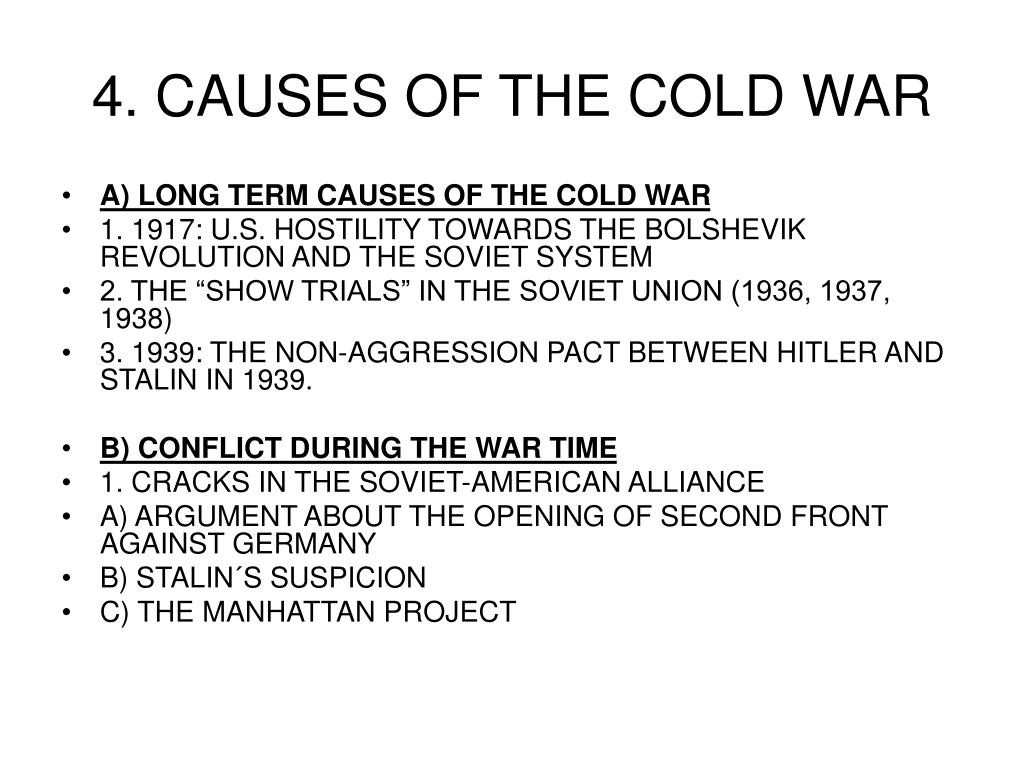
The Iron Curtain was a term used to describe the division between Western Europe and Eastern Europe during the Cold War. The term was coined by British Prime Minister Winston Churchill in a speech he gave in 1946.
The Iron Curtain was a symbol of the divide between the capitalist democracies of Western Europe and the communist states of Eastern Europe. This divide was caused by the Soviet Union's refusal to allow free elections in the countries under its control.
The Iron Curtain became a physical reality with the construction of the Berlin Wall in 1961. The wall separated West Berlin, which was under Western control, from East Berlin, which was under Soviet control.
The Truman Doctrine
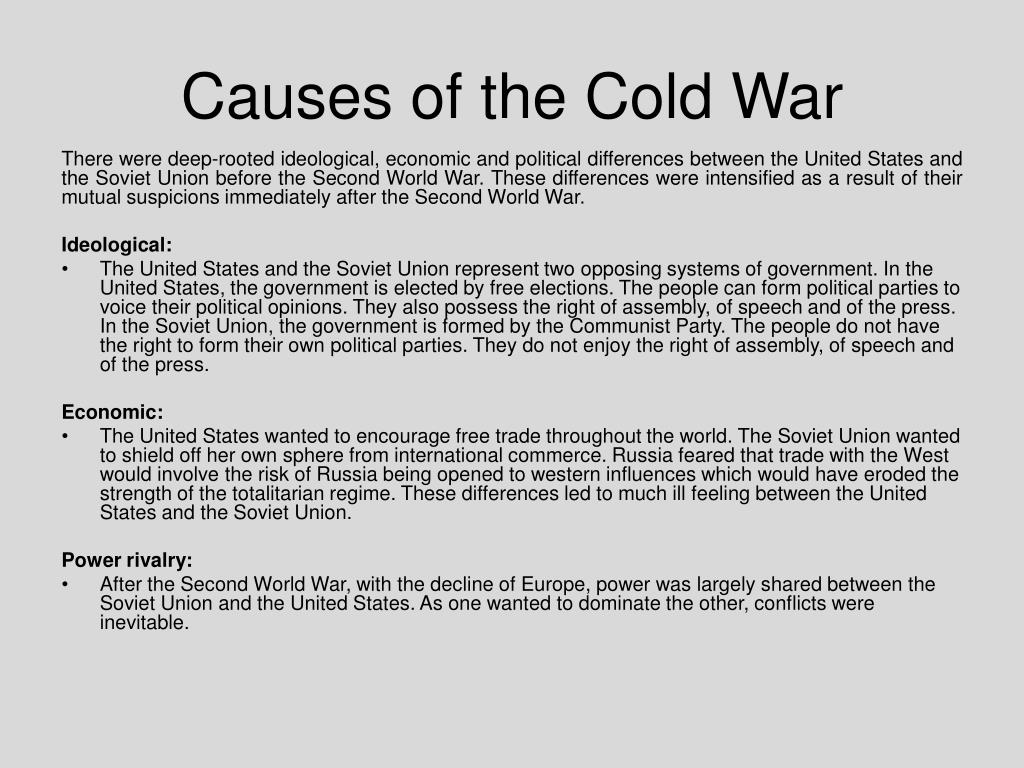
The Truman Doctrine was a policy put forth by President Harry S. Truman in 1947. The policy stated that the United States would provide military and economic aid to any country threatened by communism.
The Truman Doctrine was a response to the Soviet Union's aggressive actions in Eastern Europe, such as its refusal to hold free elections in the countries under its control. The policy was designed to contain the spread of communism and to promote democracy and capitalism around the world.
The Marshall Plan
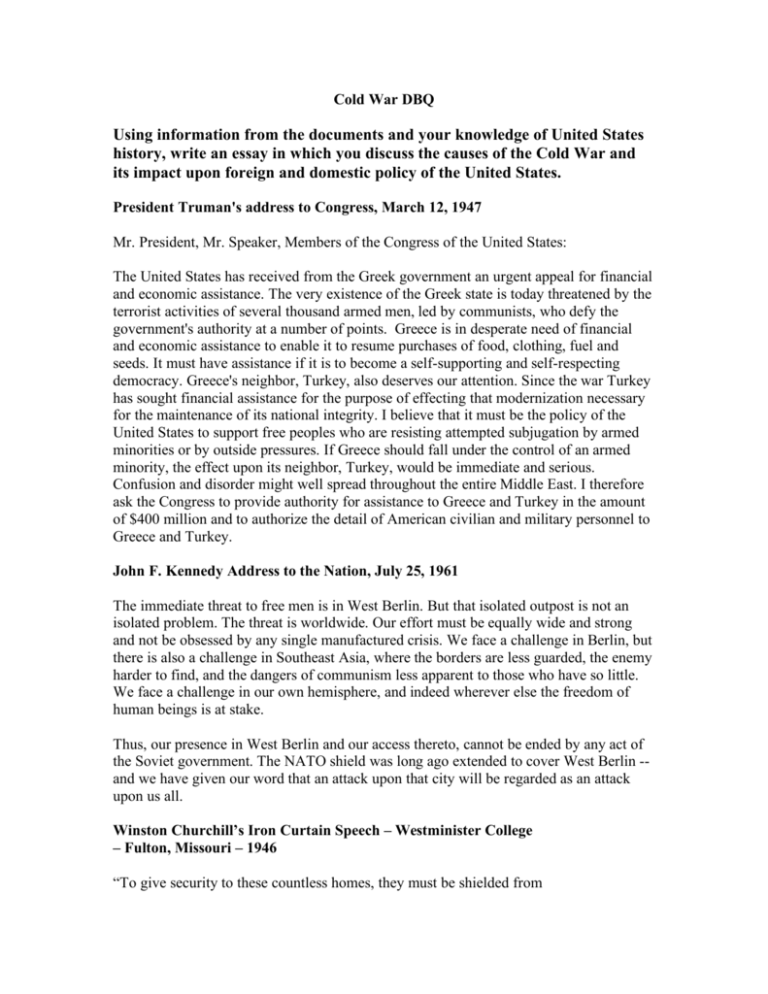
The Marshall Plan was a program of economic aid put forth by the United States in 1948. The plan provided economic aid to Western European countries in order to help them rebuild after World War II.
The Marshall Plan was a response to the economic devastation caused by the war, and it was also a response to the Soviet Union's attempt to spread communism in Western Europe. The plan was designed to promote democracy and capitalism in Western Europe, and to counter the Soviet Union's influence in the region.
The Korean War
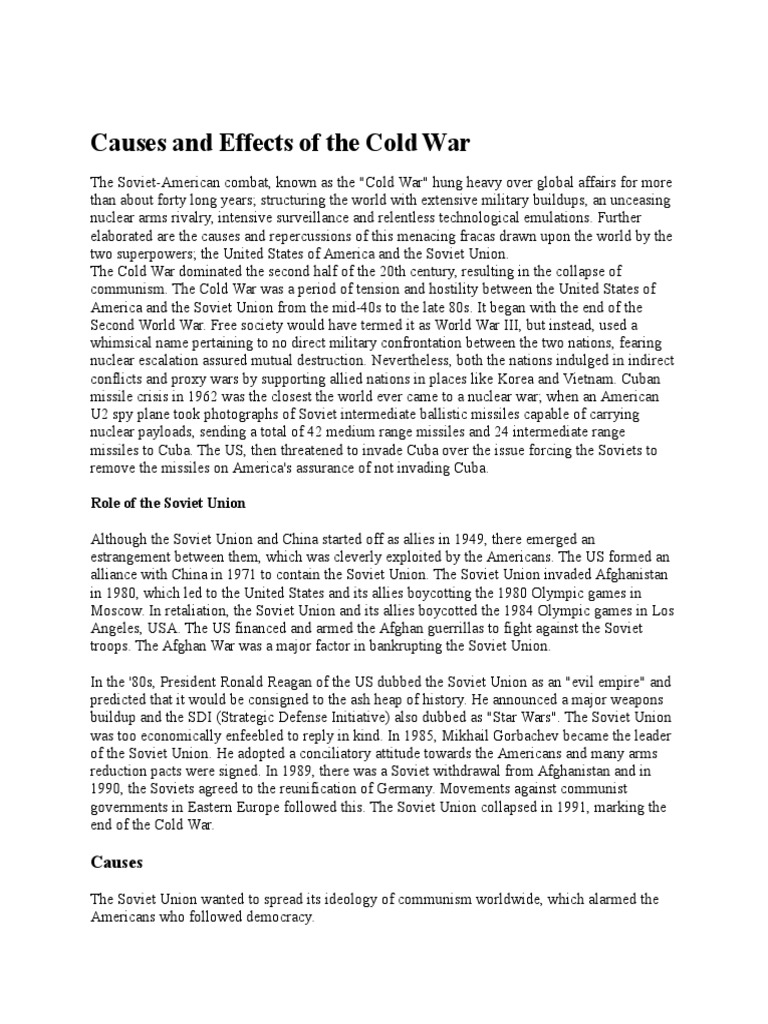
The Korean War was a conflict between North Korea and South Korea that took place from 1950 to 1953. The conflict began when North Korea invaded South Korea, and it quickly escalated into a full-scale war.
The United States and its allies, including South Korea, fought against North Korea and its allies, including China and the Soviet Union. The war ended in a stalemate, with the two sides agreeing to a ceasefire in 1953.
The Korean War was a significant event in the Cold War, as it demonstrated the willingness of the United States to use military force to contain the spread of communism.
The Cuban Missile Crisis
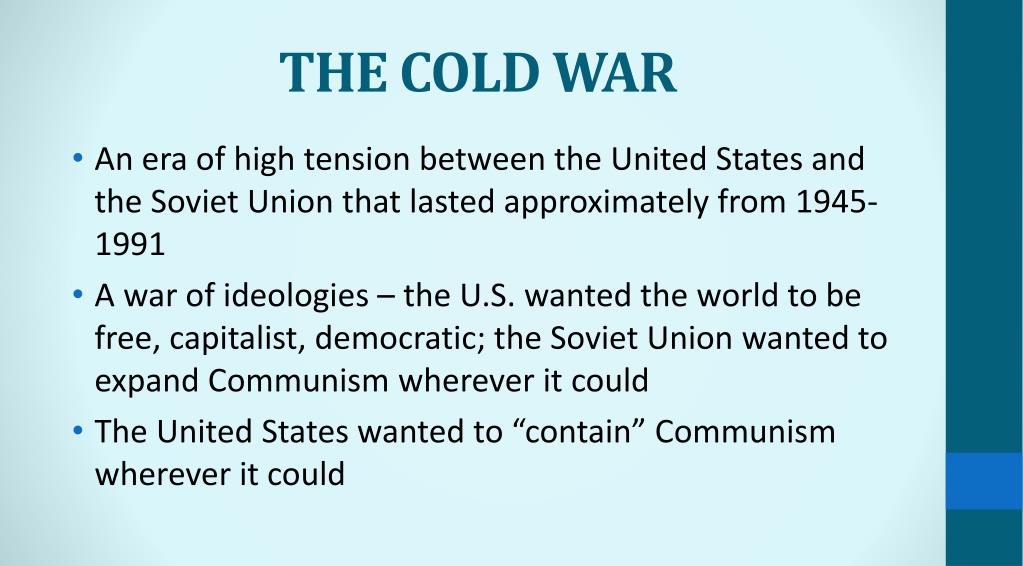
The Cuban Missile Crisis was a standoff between the United States and the Soviet Union in October 1962. The crisis began when the United States discovered that the Soviet Union had placed nuclear missiles in Cuba, which is just 90 miles from the United States.
The United States responded by imposing a naval blockade around Cuba, and it demanded that the Soviet Union remove the missiles. The Soviet Union initially refused to remove the missiles, but after several tense days of negotiation, it agreed to remove them in exchange for a promise from the United States not to invade Cuba.
The Cuban Missile Crisis was the closest the world ever came to a nuclear war, and it demonstrated the danger of the arms race between the United States and the Soviet Union.
The Vietnam War

The Vietnam War was a conflict between North Vietnam, which was supported by the Soviet Union and China, and South Vietnam, which was supported by the United States and its allies. The war took place from 1955 to 1975.
The United States became involved in the war in order to contain the spread of communism in Southeast Asia. However, the war was unpopular at home, and it ultimately ended in a stalemate. The United States withdrew its forces from Vietnam in 1973, and North Vietnam took control of the country in 1975.
The Vietnam War was a significant event in the Cold War, as it demonstrated the limits of American power and the difficulty of containing the spread of communism.
The End Of The Cold War

The Cold War came to an end in the late 1980s and early 1990s, as the Soviet Union began to collapse. The collapse of the Soviet Union was caused by a number of factors, including economic problems, political instability, and pressure from the United States and its allies.
The end of the Cold War was a significant event in world history, as it marked the end of a period of political tension and military buildup between the United States and the Soviet Union. It also marked the beginning of a new era of international relations, in which the United States emerged as the world's sole superpower.
Conclusion
The Cold War was a period of political tension between the United States and the Soviet Union that lasted from the end of World War II until the early 1990s. The main causes of the Cold War were ideological differences, economic competition, and military buildup. Other factors that contributed to the start of the Cold War include the Yalta Conference, the Iron Curtain, the Truman Doctrine, and the Korean War.
The Cold War was a significant event in world history, as it shaped the international system for decades to come. While the Cold War is now over, its legacy continues to shape international relations today.